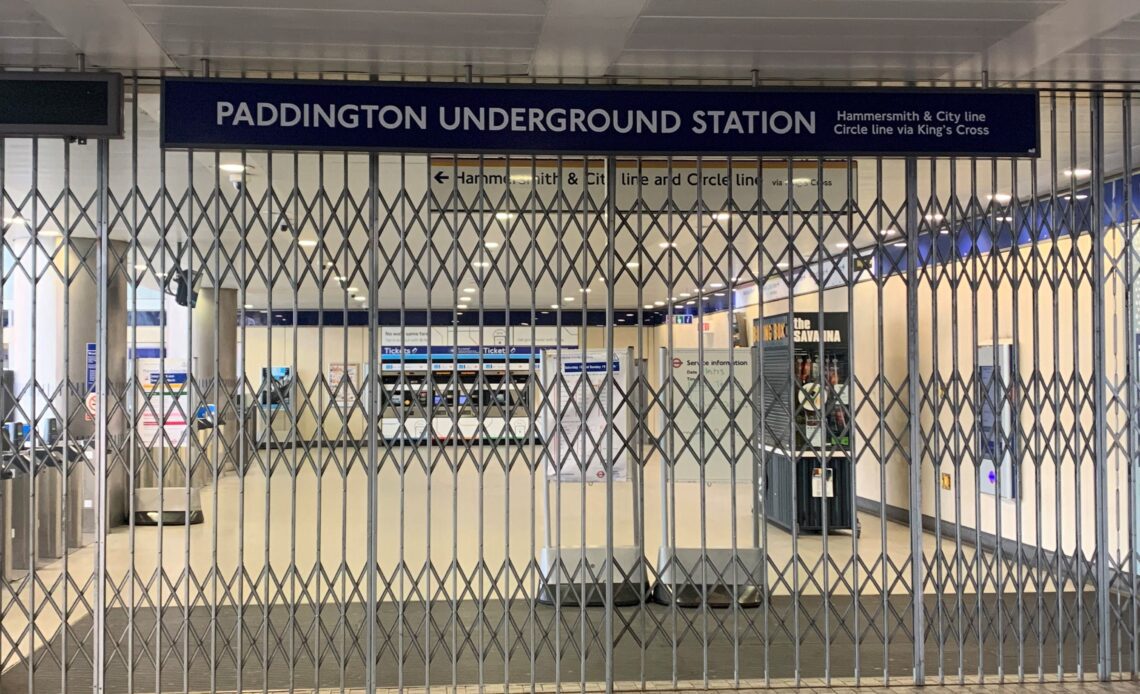Closed gates at London’s Paddington underground station, as strike action closes the entire TfL network
(PA)
A strike by London Underground drivers has brought London’s transport network to a halt.
Overground, DLR, Elizabeth line, buses and trams are running, but are much busier than usual.
Members of the train drivers union Aslef, and the RMT working for London Underground have walked out in a dispute over working arrangements and pensions.
Aslef says the action “will bring the network in the capital to a standstill”.
Geolocation technology company TomTom said that at 7am the average time it took to drive 10km (6.2 miles) in London was two minutes longer than what is usual at that time, at 15 minutes and 27 seconds.
There were 387 traffic jams in the capital stretching for a total of 406km (252.3 miles).
Transport for London (TfL) has said that “little or no service is expected on the tube network.”
Disruption will continue into Thursday (16 March), when a national rail strike involving the RMT will impact services across the country.
Tube trains that do run are likely to be more crowded than usual due to the latest round of national rail strikes involving the RMT, which begins on Thursday and continues on 18 and 30 March plus 1 April.
Because of the national rail strike, TfL says: “Some services may be unable to stop at all stations or run to their normal destination.”
London buses inundated with commuters, while taxi drivers strike gold
Commuters wait for a bus at Tower Hill
(DW Images/Shutterstock)
According to Transport for London (TfL), the tube handles up to five million passenger journeys a day.
At peak times, there are more than 543 trains whizzing around London.
While many workers across the capital have made plans to work from home, not everyone is so lucky.
Pictures show huge queues of commuters trying to reach their destination on London’s oversubscribed bus services, in the wake of this morning’s strike.
London taxi drivers are also benefiting from the strike, with long queues seen at ranks around the capital.
“Budget day is normally a quiet day for Londons hard pressed…
Click Here to Read the Full Original Article at The Independent Travel…
